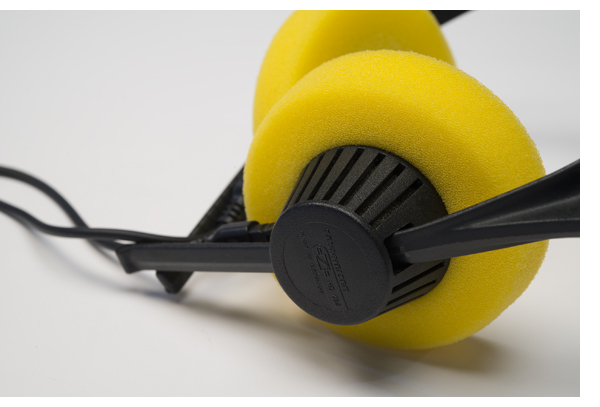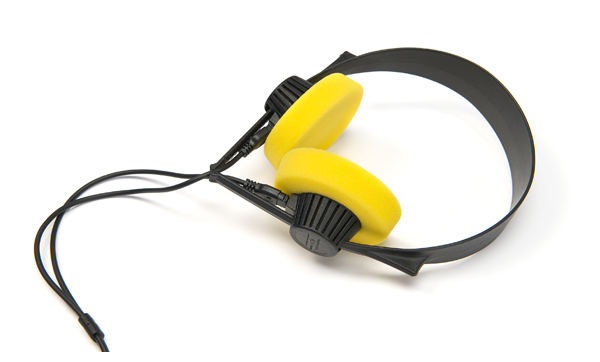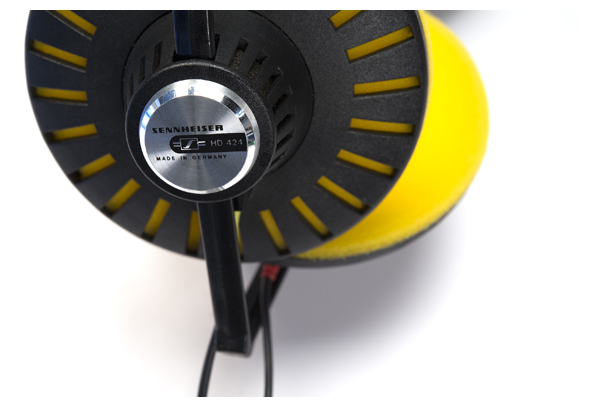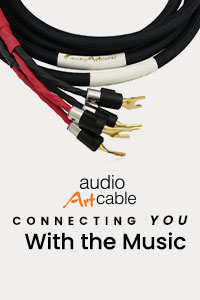Sennheiser HD 414 and 424
 With headphones now regularly tipping the scale with four-figure price tags, it’s always interesting to revisit the (then) $29.95 Sennheiser HD 414. Introduced in 1968, the HD 414 was exciting, not only for its open-air design, which was a first, but also for its bright yellow foam ear pads. Remember, this was 1968, and many audiophiles were listening to big, bulky, dark green Koss Pro4s.
With headphones now regularly tipping the scale with four-figure price tags, it’s always interesting to revisit the (then) $29.95 Sennheiser HD 414. Introduced in 1968, the HD 414 was exciting, not only for its open-air design, which was a first, but also for its bright yellow foam ear pads. Remember, this was 1968, and many audiophiles were listening to big, bulky, dark green Koss Pro4s.
The lighter design of the HD 414s made for more comfortable listening sessions, but with one unexpected side effect—now Mom and Dad could hear the trippy lyrics to all those Jefferson Airplane tunes you were rocking out to. The earlier versions of the HD 414s had an impedance of 2,000 ohms, and so they presented an easy load to the receivers of the day. So, to keep this exploration true to form, we begin with a vintage Marantz 2270.
 Jimi Hendrix’s “If 6 Was 9” comes across as solid as ever, with the quiet, subtle whispering in the background. These details are often tough to hear on an average system utilizing speakers, and they remind me why so many of us turned to headphones at an early age. It was always about a more detailed and intimate performance, compared to what speakers (especially the speakers of the day) could muster.
Jimi Hendrix’s “If 6 Was 9” comes across as solid as ever, with the quiet, subtle whispering in the background. These details are often tough to hear on an average system utilizing speakers, and they remind me why so many of us turned to headphones at an early age. It was always about a more detailed and intimate performance, compared to what speakers (especially the speakers of the day) could muster.
The vocal purity of these phones is good but not excellent. They do have an overall smoothness, making it easy to ignore the slight veil, until you try a pair of contemporary phones. A pair of current HD 650s, equipped with an updated cable from ALO Audio, instantly brings the listener into the 21st century. The HD 650s are more resolving across the spectrum. It is worth noting that, like the new phones, the HD 414s do respond dramatically to better cable. While the $200 ALO cable doesn’t make sense for a pair of NOS phones, using the stock cable that came with the HD 650s for the HD 414s makes for a very inexpensive (i.e. free) upgrade from the 40-year-old supplied cable.
The overall experience with these recently purchased NOS HD 414s is excellent; they are highly listenable heaphones, indeed. You can buy a pair for anywhere from about $15 per pair to $100, for a NOS pair like the ones pictured here. The replacement ear foam pads are about $12 per set, and though they are no longer made, NOS drivers are still available, commanding prices as high as $75 each.
The early ’70s brought the HD 424 to the lineup, with a price tag of about $80. The signature yellow pads remain, and the HD 424s are slightly more efficient than their predecessor, yet the overall sound quality through the Marantz remains more similar than different. The HD 424 has a more spacious soundstage and better resolution of deep bass.
Spinning Justin Timberlake’s “That Girl,” from his recent album, immediately reveals a bass groove that the HD 414 can’t muster. The newer phones also do a better job with the room ambience and applause, giving an even airier feel than the HD 414s.
Acoustic fare is more of an equal match. Piano riffs from Keith Jarrett at the Blue Note are rendered with good texture and decay, along with a soulful helping of Jarrett’s grunts on the track “You’d Be So Nice to Come Home To.” Here, switching back to the older HD 414 better reveals the progress made with the 424s
Like with the HD 414, the yellow ear pads are both reasonably priced and readily available—which is a good thing, as the pads in the pair we purchased on eBay had the consistency of bee pollen, falling apart as we removed them from the box. Replacement drivers are tougher to find.
Both the HD 414 and HD 424 work well at modest volume with a laptop, iPhone or iPod, though those craving high volume will want an outboard amplifier. Trying everything from a Cypher Labs AlgoRhythm Solo up to the ALO Audio Studio Six proved that these vintage phones possess at least the resolution to discern between amplifiers. Sennheiser’s own DAC/amplifier also proves an excellent partner, albeit a somewhat expensive one at $1,999.
Both phones respond well to upgraded amplification, revealing more music. However, the major shortcoming of these vintage phones is their lack of dynamic range, which dense recordings make more apparent. Examples like Bowie’s Outside, Nine Inch Nails’ The Downward Spiral or either of the Grinderman albums clearly show that these phones can only be turned up so far. And maybe that’s a good thing.
Grab ‘Em and Go
Whether you are a major headphone enthusiast who would like to add a few vintage phones to your collection or you are just entering the world of personal audio, both of these Sennheiser phones are more than worthy. As with any vintage product, find the cleanest, best taken-care-of pair you can—there are enough of these floating around that a pristine example will only set you back a few extra bucks. Plan on replacing the foam pads and see if you can score a better cable, and you’ve got a great recipe for headphone fun. -Jeff Dorgay







